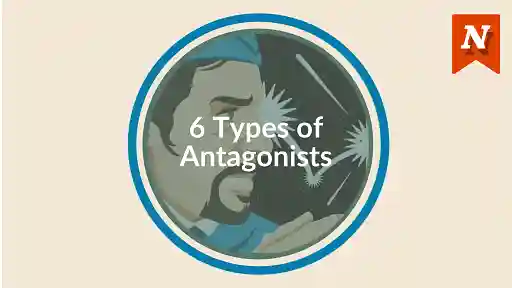From Anna Karenina to Jon Snow, Don Quixote to Harry Potter, famous characters from fiction worm their way under our skin. Here are lessons from several memorable characters in classic and modern novels:
1. Give characters internal and external conflicts
Most famous characters from books have this in common: They grapple with internal and external conflict.
Internal struggle might stem from difficult decisions or else the lingering psychological effects of past experiences. Characters also face external conflicts, from defeating villains to overcoming harsh, unforgiving environments.
Take, for example, the fictional character Jon Snow from George R. R. Martin's A Song of Ice and Fire fantasy series (the source material for HBO's A Game of Thrones).
Snow, the illegitimate son of Ned Stark, has limited prospects given the negative social status of being born out of wedlock. This is a typical issue for characters in fiction set in medieval and other earlier times involving nobility. (Illegitimacy is an important plot thread in Shakespeare's King Lear, for example.)
Snow's backstory shapes the character's internal conflict. He is constantly reminded of his 'illegitimate' status, making him an outsider.
Besides the internal conflict this yields, it also launches external conflict. Jon's father's wife, Catelyn, for example, resents him because he is a living reminder of Ned's infidelity. Together, internal and external conflict make Jon a sympathetic character, since he faces adversity through no fault of his own.
Internal and external conflicts advance plot. Jon joins the Night's Watch that guards the borders to the north of Winterfell fortress. His decision is driven, in part, by the desire to escape the limitations imposed by his birth status. Jon Snow's arc shows how internal and external conflict can shape a character's psychology and choices.
2. Include characters' flaws
Flaws and minor inconsistencies in characters' behaviour are capable of making their unfolding lives riveting.
In Leo Tolstoy's Anna Karenina, for example, the title character is complex and engrossing, in part due to her inconsistencies.
For example, although Anna has an extra-marital affair with a cavalry officer, Count Vronsky, she herself becomes increasingly jealous and suspicious of Vronsky. Anna's suspicion of Vronksy's faithfulness seems hypocritical. After all, her own relationship with him is founded on infidelity.
In Anna's tragic character, Tolstoy shows people's double standards for their own behaviour vs others'. He shows how inconsistent and irrational people can be. Anna's flaws and inconsistencies give her a multi-dimensional as well as unpredictable quality. This keeps the human drama believable and engrossing.

3. Put personality in characters' voices
Famous characters are iconic, in part, because their voices are seared into our memories. For example, in J.K. Rowling's Harry Potter series, the Potions teacher at Hogwarts, Severus Snape, has a recognizable voice. It is arrogant, theatrical, cold and lofty. For example, when he introduces his subject to Harry's class:
'As there is little foolish wand-waving here, many of you will hardly believe this is magic. I don't expect you will really understand the beauty of the softly simmering cauldron with its shimmering fumes, the delicate power of liquids that creep through human veins, bewitching the mind, ensnaring the senses.'
Snape's imperious tone makes him an effective (seeming) villain. His negativity ('I don't expect you will really understand...') conveys an aloof, belittling tone from the outset.
To give your characters' voices their own distinctiveness:
- Use tone: The negative bias of Snape's words ('foolish' and 'I don't expect you will really understand') has a cumulative effect - a tone of condescension, of underestimation
- Give characters fitting vocabularies: Snape's choice of adjectives suggest stealth and overpowering others ('creep', 'bewitching', 'ensnaring'). The sum effect is a littly creepy, fitting his slightly menacing personality
4: Tie characters' physical descriptions to crucial story details
Famous characters also achieve iconic status because they're so easy to picture. We can picture Harry Potter's glasses and lightning scar, for example, or thin Don Quixote adventuring beside his short, squat sidekick Sancho Panza. Loved novels are full of vividly drawn characters. [To develop your ability for character creation, get our guide 'How to Write Real Characters', including helpful exercises and videos.]
The Millenium trilogy of crime novels by the late Swedish author Stieg Larsson has sold over 80 million copies worldwide. Part of Larsson's series' appeal lies in his clear characterization.
In the first book in Larsson's series, translated as The Girl with the Dragon Tattoo, we first meet the hacker Lisbeth Salander through the eyes of her employer, Dragan Armansky:
'Armansky's star researcher was a pale, anorexic young woman who had hair as short as a fuse, and a pierced nose and eyebrows.'
The description of Lisbeth's hair ('as short as a fuse') is an effective simile. Besides suggesting just how close the crop is, the simile suggests she is ready for combat.
Here, Larsson uses primary features such as a character's body and hair to suggest something about their temperament and personality. When we think of famous characters from literature, often their physical appearance does this, giving more than merely visual information.
Beyond faces and eyes, characters' movement tells us plenty about them. For example, in The Girl with the Dragon Tattoo, Larsson goes on to describe Lisbeth's movement:
'Her movements were quick and spidery, and when she was working at the computer her fingers flew over the keys.'
Here again, Larsson ties Lisbeth's description to story detail. By describing her movement in relation to her line of work, Larsson cements our mental image of Lisbeth as a competent hacker.

5: Give characters motivations and goals that make sense
In F. Scott Fitzgerald's The Great Gatsby, his famous character Jay Gatsby, a mysterious millionaire, turns out to have acquired his wealth illegally. Gatsby's character arc fits the 'rags to riches' story type. Gatsby's determined acquisition of wealth as a bootlegger fits his backstory. It emerges in the course of the novel he was born 'Jimmy Gatz', the son of poor farmers.
In Gatsby's backstory, we thus see a believable motivation for Gatsby's deeds: the financial hardship he witnessed his parents endure. His choices make sense, given his formative experiences.
Similarly, anchor your characters' behaviour and choices in prior events so that a believable course of cause and effect is clear.
Practical steps
As an exercise, take a well-known character from a novel you've loved. Make a list of:
- Internal or external conflicts they face in the course of the book
- Any flaws or inconsistencies in their character and decisions
- Identifying details of their voice (phrases or expressions they love, their typical tone, whether they use flowery or short sentences)
- Physical description - are there elements of description that show their personality or profession?
- Their main goals in the story and the reasons or motivations behind them
An exercise like this helps us stay conscious of tools at our disposal for making characters stand out.
Join Now Novel and use the 'Character' section of the Idea Finder to brainstorm character details or get constructive feedback on your story's cast of characters.









Another well-written post. Clear examples, helpful links and an exercise. Thanks!
Kate - Over 7 years ago
Thank you, Kate! It's a pleasure.
Bridget At Now Novel - Over 7 years ago
I'd follow this strategy in writing. Revise, Edit and finish.
Dwaun Marshall - Over 7 years ago
A good strategy, Dwaun. The best draft is a finished draft, revision is its own discovery process.
Bridget At Now Novel - Over 7 years ago